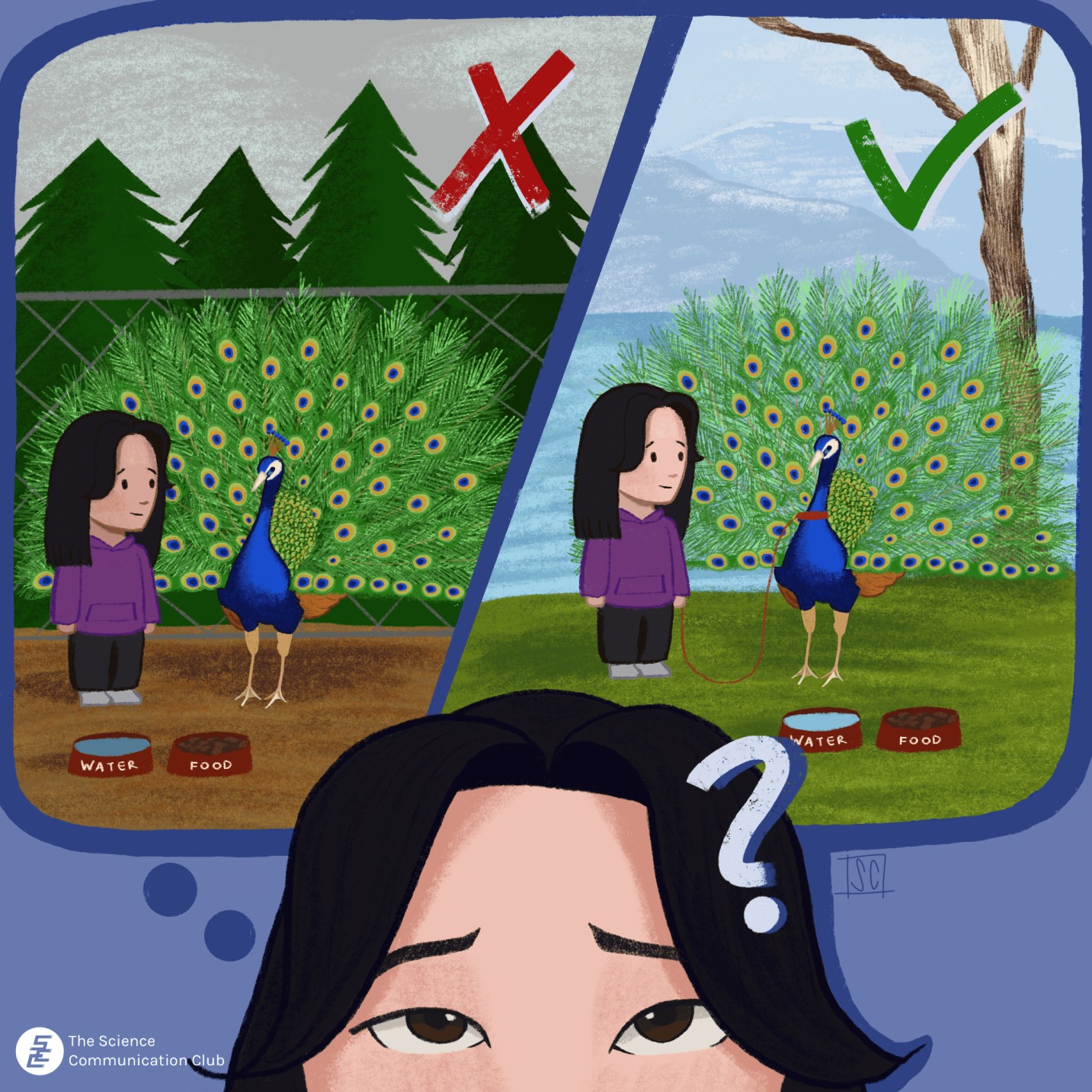
Written by Umang Khan
Illustrated by Sabrina Chen
Do you think it’s possible for a car to climb stairs? It’s an odd thought but not outside the realm of possibility, right?
In January 2022, BBC Science Focus magazine released an article listing futuristic car designs that could “revolutionize the vehicle industry”. This list includes cars that can change colour at the touch of a button or have a holographic windshield, as well as cars that have built in legs to climb stairs1.Though these designs sound outrageous, engineers and scientists consider them to be possible and thus, there is a greater chance for these designs to become a reality.
Exploring unconventional ideas and considering new possibilities is key to making progress as human beings. This illustrates the importance of being open to possibility. To attempt new ideas, one must believe they can actually come into fruition but also be aware of the limits of possibility so that they don’t waste time attempting impossible things.
Leading theories suggest that children might be especially prone to this kind of open exploration of possibilities2. For example, when adults explore how a machine works, they tend to seek specific patterns that they can apply, causing them to under-explore, since useful information outside of these patterns may go unnoticed. On the other hand, children don’t fall for such “learning traps” and continue to explore outcomes that fall outside of such patterns making them more open to exploration2. This may be because as humans acquire more knowledge, we become less open to new ideas and therefore, children inherently have more flexible and exploratory minds3. This would suggest that children are more open to possibility than adults are.
Is this true? How do we understand possibility and how does it develop over time? Do we become more closed to possibility as we age? Well, when adults and children were asked whether it was possible to eat lighting for dinner, they were both likely to say that it’s impossible implying both age groups might be on the same page about possibility from the start. However, when adults and children were asked whether something like drinking onion juice was possible, they now had differing judgements. Adults were more likely to say it was possible while children were more likely to say that it was impossible4. Now, drinking onion juice isn’t actually impossible – we can totally juice an onion, pour it into a glass and quench our thirst – but it is highly improbable. For children though, it seems like they deem improbable events as completely impossible indicating that children might be remarkably closed to possibility than we think.

Researchers have been quite surprised by this. Could it really be that children think improbable events such as drinking onion juice or painting polka dots on a plane is truly as impossible as, say, becoming invisible or walking through walls? So, a lot of them have tried to explore other ways to ask children about possibility but yielded the same results. What could be going on here?
One theory is that perhaps children just use a “similarity heuristic”5 or a rule of thumb. Children may think that improbable events are most similar to impossible events since they are extremely unlikely to occur even if they could. Therefore, calling them “impossible” seems like the most appropriate label to use. Complimenting this theory, children may implicitly understand that improbable events are indeed improbable but don’t have a mature category to explicitly call it improbable. Rather, they’re working with two labels and two labels only – possible and impossible – and they choose whichever is the best fit.
So, are children really just more closed to possibility than adults?
Well, one study asked children about the possibility of improbable events (e.g., owning a pet peacock) in a local setting (e.g., in Canada) versus a faraway land. This time, children were more likely to say that the improbable event was possible in the distant land but still impossible in a local setting6. This implies that children become more open to possibility when the setting is something unfamiliar to them (e.g, a distant land they have never visited or experienced) but become skeptical when it is something within their “own world”. This may be because children switch from relying on their own experiences (i.e., “Have I ever seen someone with a pet peacock?”) to relying on causal information (i.e., “I guess if they have peacocks in the pet store then someone could buy it and bring it home”).
How do we ultimately reconcile children’s open exploration habits with their closed possibility judgements? There isn’t a clear answer to this yet but if children tend to rely on their own experiences when making possibility judgements then their open exploration habits would allow them to experience more. So, children’s “trial & error” attitude may be what is required for them to expand their conceptual understanding of possibility, eventually forming more nuanced judgments. With this nuanced judgment and the ability to distinguish between the truly impossible and the merely improbable, innovation and creativity can flourish.
Sources:
- Future cars: 9 designs that could revolutionise the vehicle industry. wwwsciencefocuscom. https://www.sciencefocus.com/future-technology/the-future-of-cars
- Liquin EG, Gopnik A. 2022. Children are more exploratory and learn more than adults in an approach-avoid task. Cognition. 218:104940. doi:https://doi.org/10.1016/j.cognition.2021.104940.
- Gopnik A, Griffiths TL, Lucas CG. 2015. When Younger Learners Can Be Better (or at Least More Open-Minded) Than Older Ones. Current Directions in Psychological Science. 24(2):87–92. doi: https://doi.org/10.1177/0963721414556653.
- Shtulman A, Carey S. 2007. Improbable or Impossible? How Children Reason About the Possibility of Extraordinary Events. Child Development. 78(3):1015–1032. doi:https://doi.org/10.1111/j.1467-8624.2007.01047.x. https://onlinelibrary.wiley.com/doi/abs/10.1111/j.1467-8624.2007.01047.x.
- Goulding BW, Friedman O. 2021. A Similarity Heuristic in Children’s Possibility Judgments. Child Development. 92(2):662–671. doi:https://doi.org/10.1111/cdev.13534.
- Bowman-Smith CK, Shtulman A, Friedman O. 2019. Distant lands make for distant possibilities: Children view improbable events as more possible in far-away locations. Developmental Psychology. 55(4):722–728. doi:https://doi.org/10.1037/dev0000661.